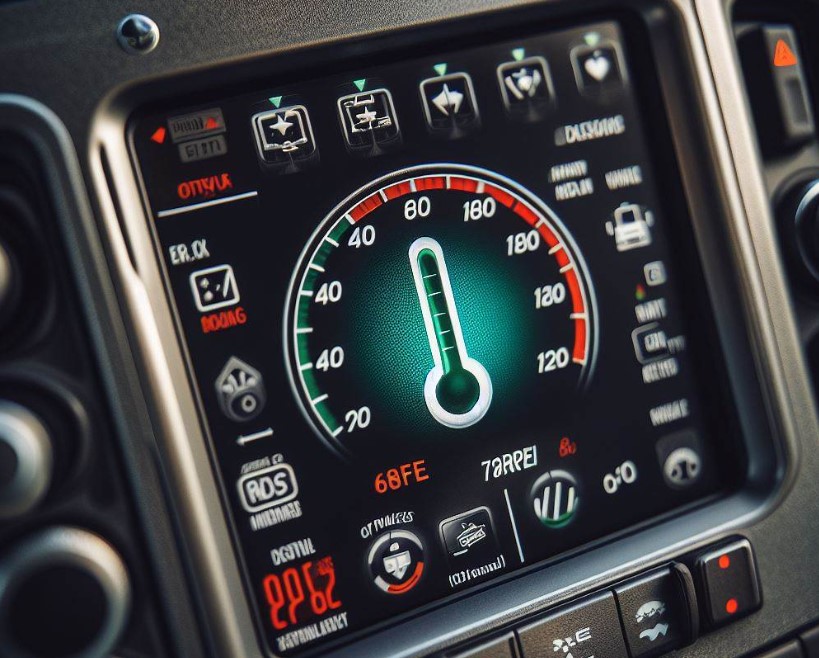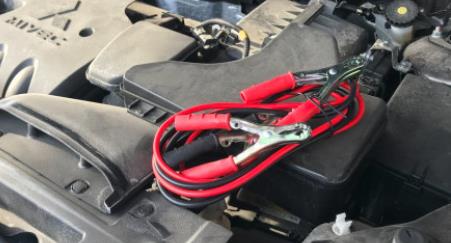68RFE Transmission Operating Temperature [Answered]
Understanding the 68RFE Transmission Operating Temperature is crucial for maintaining the health and longevity of your vehicle. This transmission, commonly found in a range of trucks, operates most efficiently within a specific temperature range. Straying from this range can lead to a host of problems. In this detailed exploration, we delve into the ideal operating temperatures, factors affecting these temperatures, and how to maintain them.
Key Takeaways
- Optimal Operating Temperature: The 68RFE transmission performs best between 170°F and 200°F.
- Impact of Overheating: Temperatures above 200°F can lead to transmission fluid breakdown, component wear, and potential failure.
- Cooling Methods: Effective cooling systems and regular maintenance are key to managing operating temperatures.
- Symptoms of Temperature Issues: Recognizing signs like delayed gear shifts can prevent serious damage.
68RFE Transmission Operating Temperature
The 68RFE transmission, a robust and sophisticated component, operates optimally between 170°F and 200°F. This range is essential for the proper function of the transmission fluid, which lubricates, cools, and cleans internal components. Maintaining this temperature range is vital for the longevity and reliability of the transmission.

Factors Influencing Temperature
- Driving Conditions: Heavy towing or driving in hot climates can elevate transmission temperatures.
- Transmission Fluid Quality: Low-quality or old fluid can lead to higher operating temperatures.
Temperature Regulation Techniques
- Cooling Systems: Utilizing auxiliary coolers can significantly reduce the risk of overheating.
- Regular Maintenance: Changing transmission fluid regularly helps maintain optimal temperature.
Impact of Temperature on Transmission Fluid
Transmission fluid plays a pivotal role in the health of the 68RFE transmission. Excessive heat can cause this fluid to degrade, losing its effectiveness in lubrication and cooling.
Signs of Fluid Degradation
- Color Change: Fluid turning dark indicates overheating.
- Odor: A burnt smell is a clear sign of fluid breakdown.
Preventing Fluid Degradation
- Fluid Choice: Selecting high-quality transmission fluid can withstand higher temperatures.
- Regular Checks: Monitoring fluid levels and conditions can prevent issues.
Symptoms of Overheating in 68RFE Transmission
Identifying signs of overheating early can prevent significant damage to the transmission.

Early Indicators
- Delayed Gear Shifting: A lag in shifting gears can indicate temperature problems.
- Transmission Slippage: This occurs when the transmission cannot maintain the gear.
Addressing Overheating
- Professional Inspection: Regular check-ups by a professional can diagnose issues early.
- Cooling Solutions: Installing an aftermarket cooler can mitigate overheating risks.
Source: [Auto Repair Professionals]
Importance of Regular Maintenance
Regular maintenance is key to ensuring the 68RFE transmission operates within the ideal temperature range.
Maintenance Tips
- Regular Fluid Changes: Changing transmission fluid at recommended intervals.
- System Checkups: Frequent inspections of the cooling system and transmission components.
Long-Term Benefits
- Enhanced Performance: Regular maintenance ensures consistent transmission performance.
- Extended Lifespan: Properly maintained transmissions have a significantly longer lifespan.
Aftermarket Cooling Solutions
For those regularly towing or in hot climates, aftermarket cooling solutions can be invaluable for the 68RFE transmission.
Types of Cooling Systems
- Auxiliary Coolers: These add-ons help in reducing the temperature effectively.
- Upgraded Fans: Improved fans can increase airflow and cooling efficiency.
Installation Considerations
- Professional Installation: Ensuring proper installation is crucial for effectiveness.
- Compatibility: Choosing a cooler that is compatible with the 68RFE transmission.
What Temp Is Too Hot For 68RFE Transmission?
The 68RFE transmission is considered too hot when its operating temperature exceeds 200°F. Temperatures above this threshold can lead to the breakdown of transmission fluid, increasing wear and tear on internal components and potentially leading to transmission failure.

Excessive heat can cause the fluid to lose its lubricating properties, which is essential for the smooth operation and longevity of the transmission. It’s crucial to monitor the temperature and take preventative measures to ensure it stays within the safe range.
What Causes A 68RFE To Overheat?
Several factors can cause a 68RFE transmission to overheat. These include heavy towing, which increases the load and stress on the transmission, and driving in extremely hot weather conditions, which can elevate the transmission’s temperature.
Additionally, using the wrong type of transmission fluid, low fluid levels, or old, degraded fluid can contribute to overheating. A malfunctioning transmission cooler or a clogged filter can also lead to increased temperatures. Regular maintenance and checks are vital to prevent overheating.
What Temperature Should My Transmission Be Running At?
For most vehicles, including those with a 68RFE transmission, the ideal operating temperature range for the transmission is between 170°F and 200°F.

Operating within this range ensures that the transmission fluid maintains its properties for lubrication and cooling, which are crucial for the smooth functioning and health of the transmission. This range is considered the sweet spot for transmission performance and longevity.
What Temperature Should Dodge Ram Transmission Be?
The Dodge Ram, equipped with the 68RFE transmission, should ideally have its transmission running between 170°F and 200°F. This range is considered optimal for the Dodge Ram’s transmission to function efficiently, ensuring the fluid is at the right viscosity for proper lubrication and cooling.
Maintaining this temperature range is essential to protect the transmission from wear and to prevent potential overheating issues, especially in models frequently used for towing or in challenging driving conditions.
Conclusion
Maintaining the optimal operating temperature of the 68RFE transmission is essential for the health and efficiency of your vehicle. Regular maintenance, understanding the impact of temperature on transmission fluid, and investing in cooling solutions when necessary can greatly extend the life of your transmission. Recognizing early signs of temperature issues can prevent costly repairs, ensuring your vehicle remains reliable and high-performing.
People Also Ask
What should I do if I suspect my 68RFE transmission is overheating?
If you suspect your 68RFE transmission is overheating, you should immediately check the transmission fluid for signs of degradation (like a burnt smell or dark color). Reduce any heavy towing or demanding driving, and consult a professional mechanic as soon as possible to diagnose and address the issue.
Can I install an aftermarket cooler on the 68RFE transmission myself?
While it’s possible to install an aftermarket cooler yourself, it’s recommended to have it done by a professional. Improper installation can lead to ineffective cooling or even damage. A professional installation ensures compatibility and effectiveness.
Is it necessary to have a professional check the 68RFE transmission regularly?
Yes, having a professional regularly check the 68RFE transmission is crucial. Professionals can diagnose potential issues early, ensure the cooling system is functioning properly, and confirm that the transmission fluid is in good condition, all of which help maintain the transmission’s health.
How does heavy towing affect the 68RFE transmission?
Heavy towing puts additional stress on the 68RFE transmission, potentially leading to higher operating temperatures. This increased stress can accelerate wear and tear and may lead to overheating if not properly managed with adequate cooling systems and regular maintenance.

Welcome to the exhilarating world of Matt Rex, a professional car racer turned renowned vehicle enthusiast. Immerse yourself in his captivating blog as he shares heart-pounding adventures, expert reviews, and valuable insights on cars, trucks, jets, and more. Fuel your passion for speed and discover the beauty of vehicles through Matt’s engaging stories and meticulous expertise. Join the ever-growing community of enthusiasts who find inspiration and expert advice in Matt Rex’s blog—a digital hub where the thrill of speed meets the pursuit of knowledge.


![Who Makes Power More Engines? [Answered]](https://www.turbochaos.com/wp-content/uploads/2023/11/Who-Makes-Power-More-Engines-768x521.jpg)


![Can A Bad PCV Valve Cause Engine Knock? [All Reasons]](https://www.turbochaos.com/wp-content/uploads/2023/11/Can-A-Bad-PCV-Valve-Cause-Engine-Knock-768x550.jpg)

